Have you ever wondered about the value of the old tractor that is quickly becoming a family heirloom as it sits pretty in your garage? Do you wonder if it’s worth anything or if you should just take it to the scrapyard?
Are you a farmer, construction worker, or antique tractor enthusiast who would like to have an antique tractor on your farm? Do you enjoy the classics but have no idea how much it would cost or which one to buy?
Well, keep scrolling. If you are a potential buyer or seller of old tractor brands, this article contains the information you need about values and brands. Continue reading to learn more.
Table of Contents
History of Tractors In the United States
Tractors have historically provided enormous assistance to farmers when compared to their forebears. Farming was largely dependent on human will and animal muscle power before the introduction of tractors.
In the United States, tractors have become an integral part of farming. What other image, besides a tractor parked in front of a red barn, best represents farming in America?
Before we get into the individual histories of the best old tractor brands, let’s take a look at the evolution of tractors in America.
Portable engines were the first powered farm implements in the early 1800s, after manufacturers saw the time and energy savings they had on “steamboats.”
They are also known as steam engines and are basically stationary that have to be moved from one work site to another.
So, in 1812, Richard Trevithick built the “Barn Engine” as a corn threshing device. Despite its limitations, it was a huge hit with farmers. Steam engines were used until the early 1900s, when more efficient combustion engines were developed.
Charles W. Hart and Charles H. Parr successfully built the first American tractors in the early 20th century. In 1903, Parr and Hart coined the term “tractor” to describe a vehicle powered by a two-cylinder gasoline engine.
It was not the first tractor with a gasoline engine. In 1889 and 1893, John Charter and John Froelich made astounding attempts. Although Froelich’s company was a flop, Hart and Parr’s did quite well, selling 15 tractors.
Between 1916 and 1922, as innovations transformed food production, demand, and life itself, the number of tractor manufacturers increased to over 100.
Tractor sales increased massively as they replaced horses and men drafted to “the war to end all wars” (WWI). During those years, many tractor types were built to determine which would be the best in the long run.
The Great Tractor Wars brought about the extinction of most of those companies as Ford entered the market with the “Fordson”.
It was significantly less expensive than every other brand. They also capitalized on Ford Motors’ good name and reputation, controlling 75% of the market.
Following Fordson’s reign of glory in the 1920s, seven companies dominated the market in the 1930s. The companies and their respective market share percentages are as follows:
- International Harvester Co with 44.3% of the market
- Deere & Co. with 21.7%
- Allis-Chalmers with 12.6%
- Case with 7.4%
- Oliver with 5%
- Massey Ferguson with 2.9%
- Minneapolis-Moline with 2.9%
15 Best Old Tractor Brands
With the mechanization of agriculture, a large number of tractor manufacturers emerged, but only a few thrived.
They not only did well, but they also made a lot of progress in the industry and sometimes even set a new standard. While some went out of business, others merged, and some are still going strong today.
1. John Deere
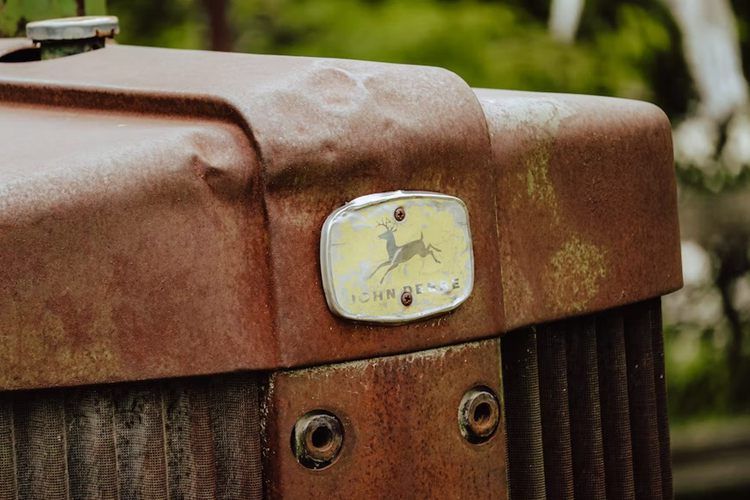
In 1912, Deere & Company started making tractors after decades of establishing a remarkable line-up of implements that had stemmed from an brilliant creation, the steel plow, by John Deere.
Years of experimentation went into building its own tractor until 1917, when Joseph Dain’s idea for a tractor called the Dain All-Wheel-Drive came to fruition. In 1910, he sold Dain Manufacturing to Deere and became a board member.
The Dain All-Wheel-Drive was ahead of its time, with a very stylish design that resembled an automobile. It had a friction-drive transmission, heavy drive chains that transferred power to its three wheels, and a high-speed four-cylinder engine with forced lubrication.
But farmers who were used to using horses and plows couldn’t afford it, especially when the economy was bad. This led to an underwhelming turn-out in sales. As a result, Deere stopped production of the Dain All-Wheel-Drive and went in search of another venture.
In 1918, Deere & Company purchased the Waterloo Gasoline Engine Company, which included its own factory in Iowa. The famous Waterloo Boy Tractor was created. The design was simpler and less expensive to produce, so it could be sold at a lower price.
Moreover, this was the time of the Great Tractor Wars between Fordson and International Harvester, which sold for nearly half the price of Waterloo Boy, making them the market’s dominant players.
Deere returned in 1923 with the Model D, which had a two-cylinder engine and pulled a three-bottom plow. This model has been in production for the longest time (31 years). The Model GP, a general-purpose tractor with a power take-off, was also introduced in 1928. (PTO).
2. Hart-Parr Company
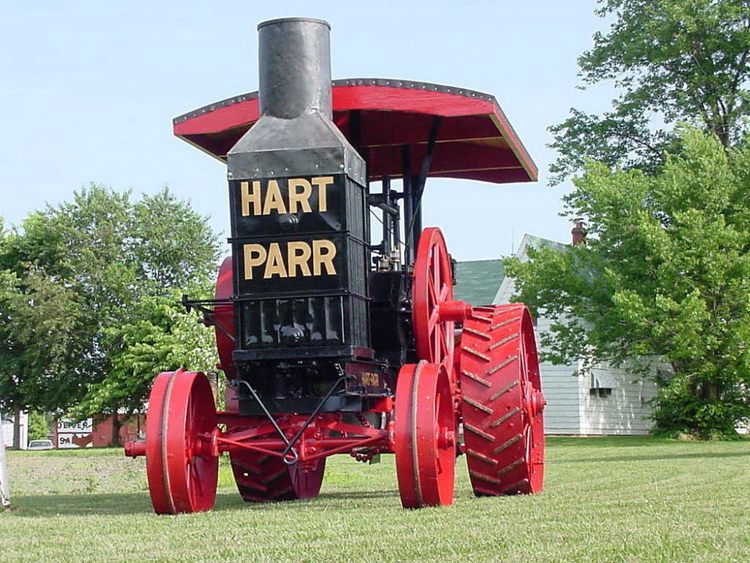
Charles Hart and Charles Parr were college friends who went on to build the first gasoline-powered traction engine in 1902 after building three internal combustion engines as part of a special honors thesis in 1897. They are also credited with coming up with the word “tractor.”
The Old Number One, their first tractor, was a monster machine in its time. It weighed five tons and had 22-45 horsepower to pull five plows. It was sold to David Jennings, who used it for 17 years before selling it, proving its durability.
From 1902 to 1919, the company produced large, oil-cooled tractors that were used to plow North America’s untouched prairies. After merging with other companies to form Oliver Corporation in 1929, the Hart-Parr name vanished.
However, it is still a favorite among antique tractor collectors. The 14,000-pound Model 3 tractor is the country’s oldest surviving internal combustion engine tractor (made in 1903). Oliver donated it to the Smithsonian in 1960.
3. Oliver Corporation
In 1929, four companies merged to form the Oliver Farm Equipment Company: Hart-Parr Tractor Company, Oliver Chilled Plow Works, Nichols & Shepherd Company, and American Seeding Machine Company.
The Oliver 60, 70, and 80 tractors were introduced in 1948, but only a few were sold. The company experienced a turnaround in the 1950s, when it led the industry in the promotion of diesel power.
The company’s first utility tractors, the Super series, debuted after the Oliver 66, 77, and 88 Fleetline series. The Oliver Super 55 was built in 1954 and had a power output of 33 horsepower.
Prior to its 1960 acquisition by the White Corporation, the Oliver Corporation marketed many additional models in 1958.
4. Allis-Chalmers
The American manufacturer Allis-Chalmers was known for producing different types of machinery.
The history of the company begins in the late 1800s and continues up until 1999, when it was forced to shut down in Milwaukee due to financial difficulties. The company was formed by the merger of several small businesses that all did metal work.
There was Edward P. Allis Company, which made steam engines and milling equipment, Fraser & Chalmers, which made equipment for mining and milling ore, Gates Iron Works, which made equipment for rock and cement milling, and Dickson Manufacturing Company, which made engines and compressors.
The Allis-Chalmers Company was founded in 1901 and began manufacturing a wide range of pyrometallurgical equipment. However, financial difficulties in 1912 prompted Otto Falk to advocate for market expansion and agricultural mechanization.
The Model B (1937-1951) was the most popular of its time and allowed smaller farmers to upgrade from horses. When compared to the more powerful Model WC, it was portable, affordable, and an excellent machine with about 22 hp, selling over 120,000 units.
The Model G (1948–1955) was the smallest A-C tractor built. The Model G (1948-1955) was the world’s smallest A/C tractor.
It had a four-cylinder engine with more than 9 horsepower and the ability to attach implements in front of the operator, making it an efficient piece of farming machinery. The company continued to expand as a result of future innovations.
5. Ford Tractor
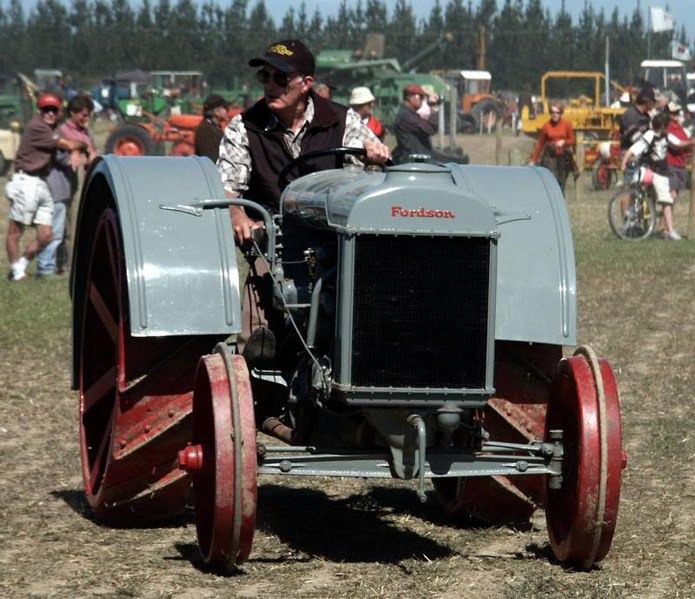
Henry Ford entered the American farm industry in 1917 with the Fordson brand. This brand, like its automobile predecessor, was mass-produced tractors, and it was the first mass-produced tractors. It also introduced a new level of design and efficiency to the industry.
The Fordson became available to the average farmer due to mass production, gaining popularity and affluence in North America and beyond.
It was also the first lightweight tractor. The British government requested that Henry Ford produce tractors to reduce food scarcity caused by a blockade during the First World War.
Fordson tractors were versatile machines that could be used on and off the farm. Work was completed faster and more efficiently than with other tractors.
6. International Harvester Company
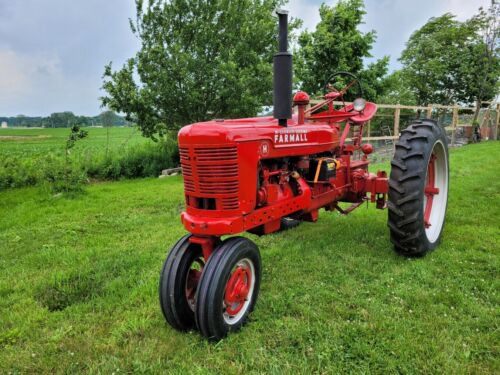
IHC, or IH, was one of America’s largest agricultural manufacturers. In 1902, McCormick Harvesting Machine Company, Deering Harvester Company, and three other smaller companies merged to form the company.
The Farmall was a revolutionary tractor design in 1924, but the company had earlier tractors. This new tricycle row-crop tractor could not only plow but also cultivate the field. It dominated the market alongside Ford, Allis-Chalmers, Massey Ferguson, and John Deere in the 1950s.
7. Case Corporation
It was formerly known as the J.I. Case Company and was the first to use a steam engine in agriculture. Case built his first portable steam engine in 1869.
After ten years, he constructed his first self-propelled traction engine with a drive mechanism. Case began production of gasoline engines in 1899.
After winning a plowing match in 1904, the Case Company gained popularity on the “old continent.” In its later years, it produced kerosene tractors. It was also a participant in the Tractor War of 1923, along with IHC, Ford, and John Deere.
8. Massey Ferguson
The first Massey Ferguson tractor was the MF35, which was manufactured in 1957, despite the fact that the company was founded in 1847. Following a merger with A. Harris Son & Company in 1891, they produced a variety of tractors ranging in horsepower from 20 to 35.
The 100 series began with the MF135 model, which was the company’s next big seller due to its maneuverability, dependability, and power. The company continues to manufacture powerful tractors to this day.
9. Caterpillar
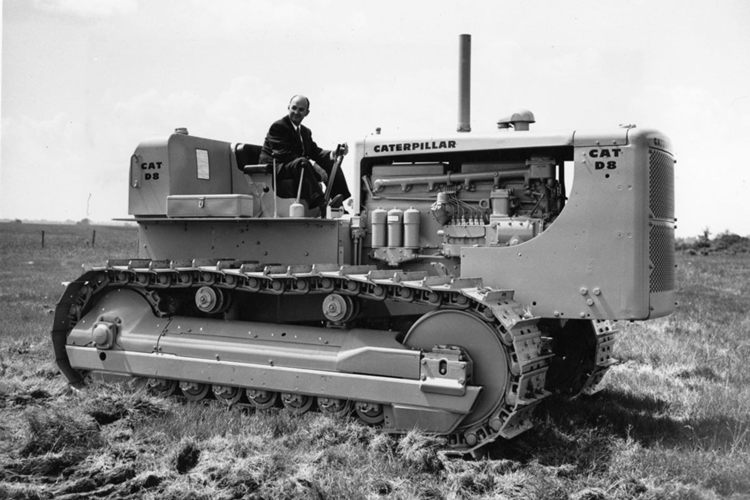
In 1925, C. L. Best Gas Tractor Company and Holt Manufacturing Company merged to form the Caterpillar. The company consolidated its product lines, offering only the Holt Company’s 2 ton, 5 ton, and 10 ton, as well as the Caterpillar 30 and Caterpillar 60.
During the 1930s Great Depression, Caterpillar expanded and replaced gas engines with diesel engines. It branched out of the United States in 1950 to become a multinational corporation.
Caterpillar was distinguished by the absence of rear wheels, which were represented by tracks. This design was created to assist farmers in difficult terrain fields.
10. Huber
Huber tractors were produced from 1898 until 1942, when the company was directed to produce construction equipment during the Second World War. It had a relatively short lifespan in the construction company, but it was a productive few years.
It produced its first gas tractor using VanDuzen designs in 1989, and it was a huge success. Thirty of these tractors were built, making Huber the first company to mass-produce commercial gas traction engines.
Huber introduced the Farmer’s Tractor in 1919, followed by lighter models with four-cylinder engines known as the Light Four Line.
The Super Four models were introduced in 1922, followed by the row-crop model in 1937, before the company ceased operations after World War II.
11. Advance-Rumely Company
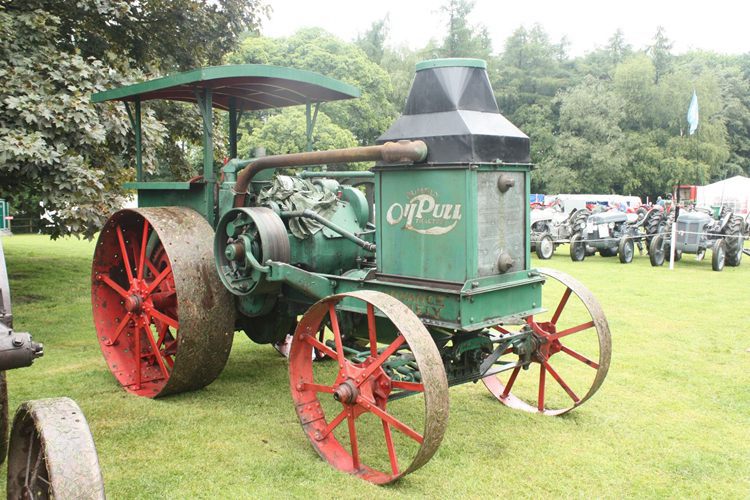
They began with threshers and progressed to steam engines in 1853, becoming known for their large tractors. Allis-Chalmers acquired the company in 1931. Advanced-Rumley was formed in 1915 by the merger of Advanced Thresher Company and M. Rumely Company.
The company’s tractors and traction engines include Gaar-Scott traction engines (1885-1914), Advance Traction engines (1885-1917), Rumely traction engines (1895-1916), Rumely Oil Pull tractors (1910-1930), Rumely Do-All (1928-1932), Rumely Six (1930-1931), and the Rumely Gas Pull.
12. Eicher Tractor
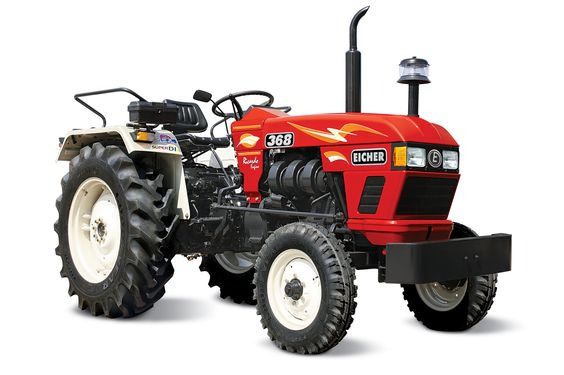
In the 1930s, Albert and Josef Eicher created the first Eicher tractor. Eicher built the first Deutz-diesel tractor with 20 horsepower in 1936. The tractor was first represented in the DLG Exhibition in 1937.
13. McCormick
In 1831, this company was horse-drawn, and in 1902, it merged with Deering to form International Harvester. A number of McCormick-Deering-branded products were renamed McCormick and sold in Europe.
14. Avery Tractor Company
Founded in 1891 after the Civil War, this farm tractor builder produced several steam engines but was best known for the later under-mounted engine. Farmers in central Illinois adored them, and they even ventured into automobiles before succumbing to the Great Depression.
15. New Holland Tractors
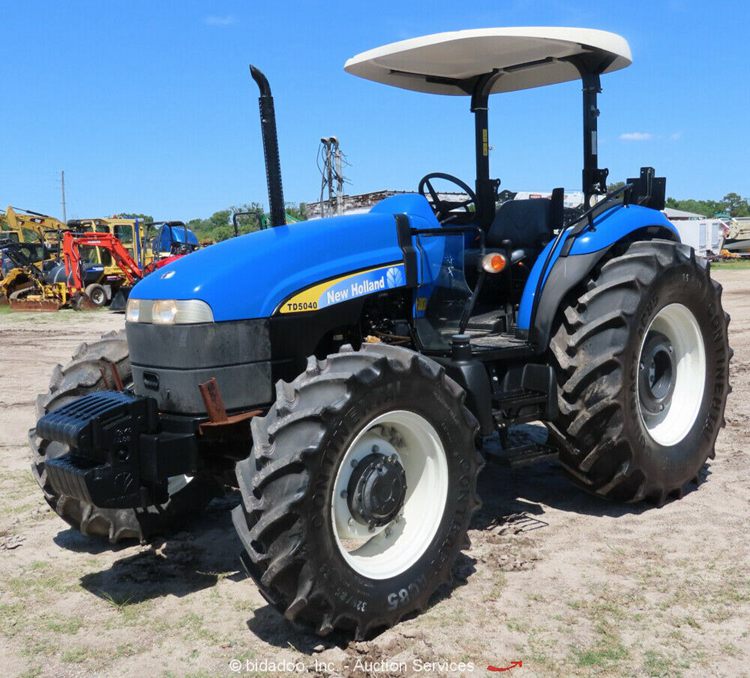
New Holland’s never-ending supply of innovative tractors began in 1895, when Abe Zimmerman founded the company.
With the introduction of its 70 hp tractor in 1918, it achieved remarkable success. Sperry-New Holland was formed in 1947 when the company merged with Sperry Corporation. It was later sold to Ford and then to Fiat.
Value Guide for Antique Tractors
Unlike other antiques such as vases, dolls, and paintings, which appreciate in value because they are not used, purchasing old tractors might not make sense. Tractors were designed to make farming more efficient, not drudgery, as ‘vintage’ tractors are prone to.
The price also, like other vintage items, is directly proportional to how old and rare it is. Therefore, the better the condition of the tractor, the higher the price.
Some of the most sought-after vintage tractors are:
- Farmall Model H which sells for $2,000 – $15,000.
- Allis-Chalmers Model WC priced at $1,000 – $5,000.
- John Deere’s Model D priced within $3,000 – $10,000).
- Ford N8 which you can buy for $2,500 – $15,000.
Frequently Asked Questions
1. What Is the Most Valuable Tractor?
An undisclosed bidder paid $1.47 million for a 1913 Case model 30-60 at the Aumann Auction in Illinois in April 2022.
2. What Is the Most Popular Tractor Brand In the World?
The most popular tractor brand is John Deere.
3. What Makes a Tractor a Vintage Item?
A vintage tractor is one that must have been built over 25 years ago.
Conclusion
Vintage tractors have a wealth of experience that newer models lack, and as such, they should be worth much more than they are. Only the most valuable tractors are sold at private auctions at high prices.
The mass-produced ones, which sell for a few thousand dollars, are usually overlooked. You can leave a comment below if you have any questions about vintage or new tractor brands.





![Where To Sell Antique Furniture In 2022 [Ultimate Guide]](https://www.jacquelinestallone.com/wp-content/uploads/2022/09/Etsy-Your-Place-To-Buy-And-Sell-All-Things-Handmade-600x450.jpg)


